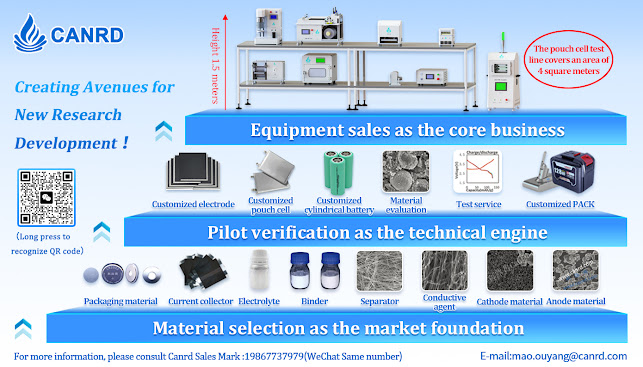The commercialization of all-solid-state battery production is a complex system engineering process, with its core mainly consisting of three key components: material system development, cell structure design, and cell production control. To produce a high-performance commercial all-solid-state battery, it is essential to master these three core aspects. Once the process for manufacturing commercial all-solid-state batteries is mastered, assembling and producing coin-type half-cells, coin-type full-cells, and simple structure flexible batteries (with a single positive/negative electrode stacked structure) becomes relatively easy.
Canrd Brief Introduce
Canrd use high battery R&D technology(core members are from CATL) and strong Chinese supply chain to help many foreign companies with fast R&D. We provide lab materials, electrodes, custom dry cells, material evaluation, perfomance and test, coin/pouch/cylindrical cell equipment line, and other R&D services.
Email: contact@canrd.com Phone/Wechat/WhatsApp: +86 19867737979
Canrd Official Web Canrd Company Vedio Canrd Company profile
Website : www.canrud.com


























No comments:
Post a Comment